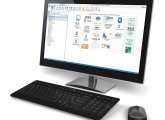You can’t fail to have noticed the impact LEGO MINDSTORMS Education EV3 from LEGO® Education has had. Flexible and powerful, this intelligent kit is not a toy but a platform; it comes with software that guides students through the process of building and the built-in curriculum pack is stunning.
LEGO Education never stands still for very long, though, and is always looking to innovate and support teachers; which is why the company has now produced add-on curriculum packs with which you can complement your EV3 resources. For computing, you have the EV3 Computing Scheme of Work, which provides extensive content for delivering the computing curriculum at Key Stage 3 and is an ideal add-on to EV3 resources; other add-on packs include D&T, science and space. These are all provided as digital downloads so they are very easy to access.
An active scheme of work is a vital document that is fundamental to progress and supports planning for teaching, learning and assessment at a number of levels; no teacher can effectively teach without one – but they are undoubtedly a chore to compile. The Computing Scheme of Work meets National Curriculum Standards and consists of 12 activities providing around 36 hours of classroom teaching, pupil worksheets, and teacher support. The scheme of work will help students discover the importance of programming in our everyday lives and uses real-world examples to help them apply and develop their knowledge in relation to vehicle reversing warning systems, keyless ignition systems and cruise control. As the new computing curriculum has a much stronger emphasis on programming and coding than ever before LEGO Education has really stepped up to the plate to help us tackle this abstract subject.
Clever content
Each of the 12 sessions included in the scheme includes an introduction, links to the National Curriculum, activities and challenges, student work cards, programming examples and possible solutions, further text based possible solutions using RobotC, supporting visuals and links to tutorial videos. Each session builds on previous knowledge and experience, with lessons moving from visual to text-based programming, and there are usually three main tasks to complete per session. The actual lesson plans come with everything you need to make a session run smoothly and successfully. They contain the outcomes, vocabulary, images, excellent teacher notes and what to do, so they will not only greatly reduce planning time but will provide a basis to develop more far-reaching and multifaceted lessons. At the end of each session are full page examples of the pictures and programs that you find in the lesson plans, which could be used as handouts.
In the first nine sessions, students spend time learning about the different aspects involved in automating a wheeled robot, from the information passed to passengers and pedestrians to the car being able to follow a pre-determined route. The last three sessions are devoted to students designing their own ‘automated car’ and applying as many of the features they have experienced as possible over previous sessions. This involves mind mapping, selecting the best solution, building and programming, testing and analysing, reviewing, revising and communicating. This is where students discuss their strengths and weaknesses and begin taking responsibility for specific roles such as designer, builder, researcher, marketer, and programmer. Whatever role they play, with this scheme of work, all students are in the driving seat.
Unlimited potential
Something to bear in mind is that each session requires students to have a good understanding of the EV3 software. LEGO Education has thought of everything though and this can be achieved by providing Robot Educator tutorials which, supported by teaching and exploration, will help ensure that students are match fit and activity ready.
A good scheme of work will be appropriate, relevant and challenging with lots of opportunities for developing projects or mini-projects. It will give an overview of the course content, provide for a sequential listing of learning tasks, show a relationship between content and support materials and provide a basis for long range planning, training and evaluation of the course. It will be more than just a checklist, but contain lessons with collaboration at its core. Well, this bullet-proof scheme of work does all that and so is admirably fit for purpose. If there is a minor quibble, it’s that the scheme is downloaded as a pdf, meaning that it can’t easily be amended and personalised by individual teachers.
Teaching the new computing curriculum isn’t an easy process but this innovative scheme of work from LEGO Education can help meet your school’s needs by providing exciting computer science activities and resources inspiring students to think about how important computer programming really is. It provides the highest calibre of lessons going for teaching robotics. Whilst this resource has been written specifically for the computing curriculum at KS3 you could easily extend the ideas to KS4 if needed. There are also rich opportunities for cross-curricular work especially in maths, science and design technology – the sky is the limit. Remember though, this is an add-on resource and so you still need the LEGO® MINDSTORMS® Education EV3 Core Set and Software (£299.99 exc. VAT).








